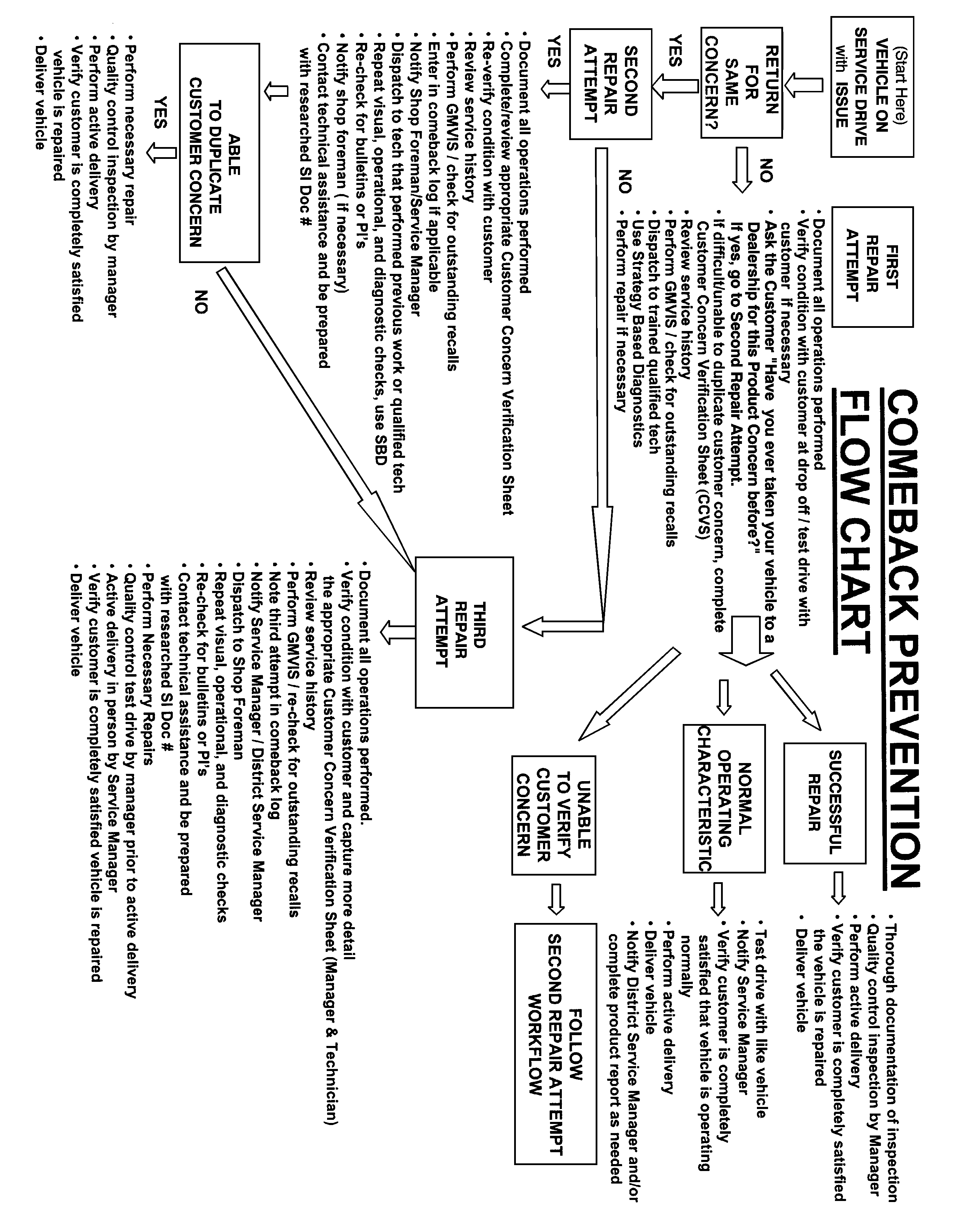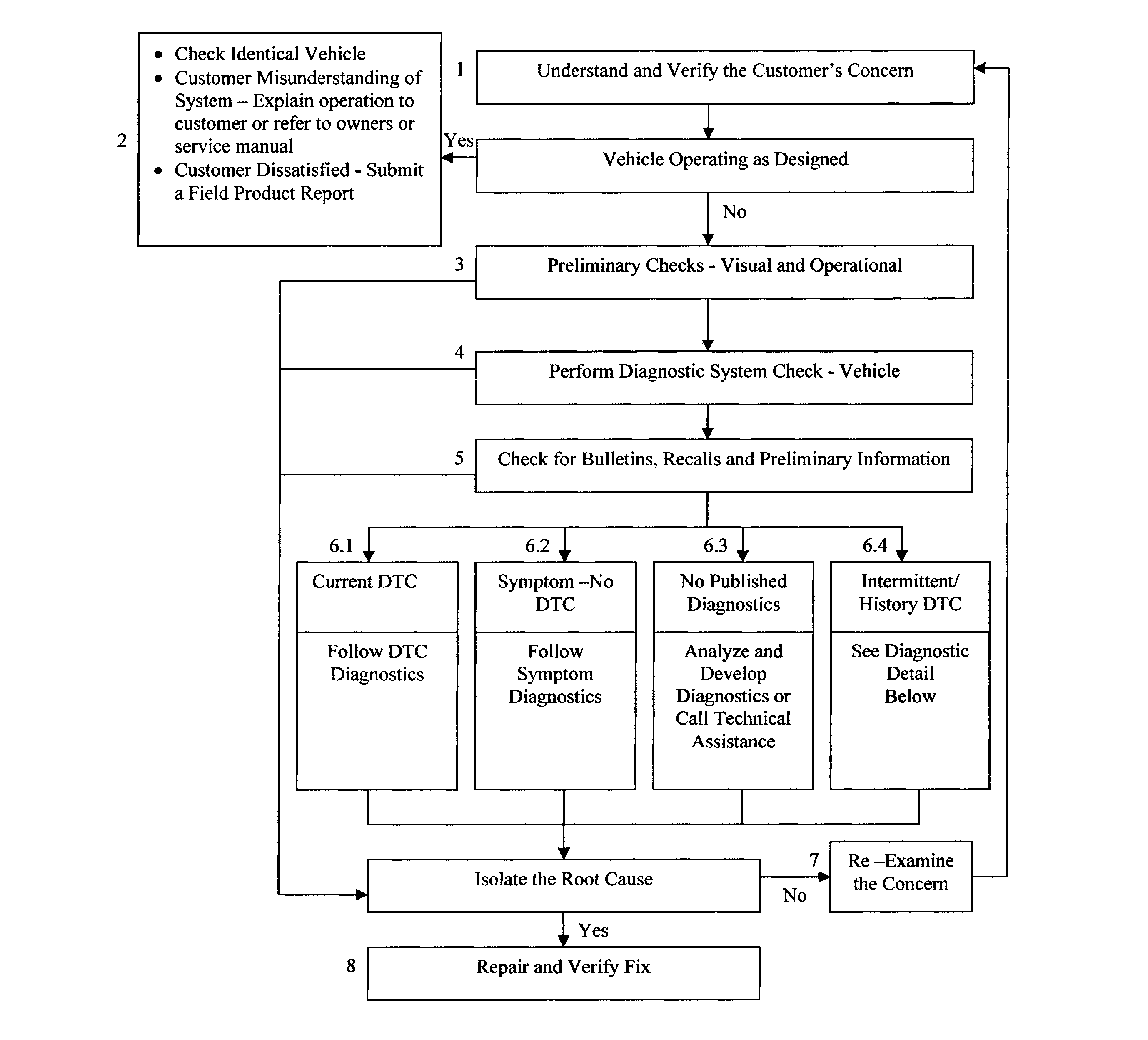GM Technical Assistance Information Form (TAC) and Service Strategy Process Utilizing Customer Service Comeback Prevention, Strategy Based Diagnostics (SBD) and Intermittent Concern Diagnosis

| Subject: | GM Technical Assistance Information Form (TAC) and Service Strategy Process Utilizing Customer Service Comeback Prevention, Strategy Based Diagnostics (SBD) and Intermittent Concern Diagnosis |
| Models: | 2008 and Prior Passenger Cars and Trucks (Including Saturn) |
| 2008 and Prior HUMMER H2, H3 |
| 2008 and Prior Saab Vehicles |
| Attention: | "GM of Canada" and "IPC" dealers are not authorized to utilize this service bulletin. |
This bulletin is being revised to update dealership service departments with key elements to a successful customer dealership service experience. Please discard Corporate Bulletin Numbers 01-00-89-011F (Section 00 - General Information).
Important: GM TAC supports Current Model year products as well as the prior nine model years..
To better assist GM dealers in providing customers with the best possible service experience through fixing product issues correctly the first time, below you will find the updated Best Practice Service Strategy. ALWAYS REFER TO THE CUSTOMER COMEBACK PREVENTION FLOW CHART (below) FOR PROPER DETAILED SERVICE STRATEGY. The following list HIGHLIGHTS critical strategy elements that must be followed for EVERY Customer Service Event.
- Verify Customer Concern utilizing the Customer Concern Verification Sheets (CCVS - examples shown later in this bulletin).
- Compare to a like vehicle. If the customer is dissatisfied due to a NORMAL OPERATING CHARACTERISTIC, create a Field Product Report (FPR) and notify the DVM.
- Check the service history and research VIS. VERIFY THE NUMBER OF REPAIR ATTEMPTS FOR THE SAME ISSUE AND DAYS OUT OF SERVICE.
- Perform Strategy Based Diagnostics (DTC, SI, Recalls, PIs, Bulletins). For intermittent diagnosis, also refer to Corporate Bulletin Number 06-00-89-026.
- For parts delays and order issues, ensure that the Parts Manager has ordered as a CSO and upgraded to a SPAC case as quickly as possible.
- For parts catalog or service application issues, utilize ParTech to resolve the customer's concern as quickly as possible. (Saturn retailers should contact the Saturn Parts Assistance Center and Saab dealers should contact the Parts HotLine.)
- For a second repair attempt for the same diagnostic issue, or more than five days out of service, call TAC with the above documentation and completed Technical Assistance Information Form (TAIF - example shown later in this bulletin). Follow up until the vehicle is repaired, including RESULTS OF PREVIOUS DIAGNOSTIC RECOMMENDATIONS MADE BY TAC.
- For a third repair attempt for the same diagnostic issue, or more than 14 days out of service, notify the Shop Foreman/Service Manager/DVM.
- Close requested TAC case via DealerWorld with detailed repair information (refer to the instructions below).
- Complete the TAC quality survey via Dealer World when closing requested TAC cases (refer to the instructions below).
- Update Dealership TAC call log sheets after each call.
- Verify customer is completely satisfied that the vehicle is repaired.
Comeback Prevention
Comebacks hurt your dealership's service image and the GM vehicle's brand image. We understand that due to ever-increasing vehicle complexity that this is a challenge. We suggest dealers focus on the following areas in order reduce comebacks.
| • | Communication |
| • | Service return logs |
| • | Quality control |
The following Customer Comeback Prevention flowchart details comeback prevention "best practices service strategy."

| • | The upper portion of the Technical Assistance Information Form (TAIF - an example is shown later in this bulletin) is used to prepare your information about the vehicle prior to contacting Technical Assistance. Preparing for your call in advance will allow Technical Assistance personnel to reduce your call time and provide quality recommendations. In preparing this information, please refer to the Strategy Based Diagnosis section below. These diagnostic steps should be taken BEFORE you contact Technical Assistance. Doing so will assist you in completing the form. |
| • | Please check the Vehicle Information System (VIS) for prior service history. |
| • | The Electronic Case Closing (ECC) section should be accessed via DealerWorld to close a Technical Assistance case. The TAC Case Closing information is important because repair information that is loaded into our database can be used to repair other vehicles with the same concern. |
| • | The Quality Survey section should be accessed via DealerWorld. Completion of this survey provides TAC with your case feedback to improve the service we provide to dealerships. |
| • | The TAC Case Log Sheet should be kept by a phone designated for calling TAC. When calling TAC, you should log in the date of the call, your name, the TAC consultant's name, the repair order number, TAC case number and the date the case was closed. The TAC Case Log will allow you to maintain an accurate list of your open and closed TAC cases. |
| • | The General Motors Technical Assistance Center Phone Prompts are designed to get the caller to the appropriate group when calling. A TAC phone prompt chart can be accessed via the DealerWorld Service tab and by selecting Service Forms. The phone prompt chart will be listed under TSB 01-00-89-011G. |
Strategy Based Diagnosis
The goal of Strategy Based Diagnosis is to provide guidance when you create a plan of action for each specific diagnostic situation. Following a similar plan for each diagnostic situation, you will achieve maximum efficiency when you diagnose and repair vehicles. Although each of the Strategy Based Diagnosis boxes is numbered, you are not required to complete every box in order to successfully diagnose a customer concern. The first step of your diagnostic process should always be Understand and Verify the Customer’s Concern. The final step of your diagnostic process should be Repair and verify the Fix. Refer to the following chart for the correct Strategy Based Diagnosis.

- Understand and Verify the Customer’s Concern: The first part of this step is to obtain as much information as possible from the customer. Are there aftermarket accessories on the vehicle? When does the condition occur? Where does the condition occur? How long does the condition last? How often does the condition occur? In order to verify the concern, the technician should be familiar with the normal operation of the system and refer to the Owner or Service Manual for any information needed.
- Vehicle Operating as Designed: This condition exists when the vehicle is found to operate normally. The condition described by the customer may be normal. Compare with another like vehicle that is operating normally under the same conditions described by the customer. Explain your findings and the operation of the system to the customer. If the customer is dissatisfied submit a Field Product Report.
- Preliminary Checks: Conduct a thorough visual inspection. Review the service history. Detect unusual sounds or odors. Gather diagnostic trouble code (DTC) information in order to achieve an effective repair.
- Perform Published Diagnostic System Check - Vehicle: The Diagnostic System Check - Vehicle verifies the proper operation of the system. This will lead the technician in an organized approach to diagnostics.
- Check Bulletins, Recalls and Preliminary Information (PI) and check the Vehicle Information System (VIS) for prior service history.
- Diagnostic categories.
- Re-examine the Concern: If a technician cannot successfully find or isolate the concern, a re-evaluation is necessary. Re-verify the concern. The concern could be an intermittent or normal condition.
- Repair and Verify Fix: After isolating the root cause, make the repairs and validate for the correct operation by performing the Diagnostic Repair Verification. Verifying that the DTC or symptom has been corrected may involve road testing the vehicle.
| 6.1. | Current DTC: Follow the designated DTC diagnostic in order to make an effective repair. Refer to Diagnostic Trouble Code (DTC) List - Vehicle. |
| 6.2. | Symptom - No DTC: Select the appropriate symptom diagnostic. Follow the diagnostic steps or suggestions in order to complete the repair. Refer to Symptoms - Vehicle. |
| 6.3. | No Published Diagnostics: Analyze the Concern. Develop a plan for the diagnostics. The Service Manual schematics will help you to see system power, ground, input, and output circuits. You can also identify splices and other areas where multiple circuits are tied together. Look at component locations to see if components, connectors or harnesses may be exposed to extreme temperature, moisture, or corrosives (road salt, battery acid, oil or other fluids). Utilize the wiring diagrams, system description and operation, and system circuit description. |
| 6.4. | Intermittent/History DTC: An intermittent condition is one that does not occur continuously, may be difficult to duplicate, and will only occur when certain conditions are met. Generally, an intermittent is caused by faulty electrical connections and wiring, malfunctioning components, electromagnetic/radio frequency interference, driving conditions, or aftermarket equipment. The following approaches/tools may prove to be beneficial in locating and repairing an intermittent condition or history DTC. |
| • | Combining technicians knowledge with the available service information |
| • | Evaluate the symptoms and conditions described by the customer on the Customer Concern Verification Sheet. |
| • | Follow the suggestions on Testing for Intermittent Conditions and Poor Connections . |
| • | Use the available scan tool, digital multi-meter, or Vehicle Data Recorder J 42598 with data capturing capabilities. |
Technical Assistance Information Form | |
|---|---|
Questions to Answer Prior to Contacting Technical Assistance | |
Caller Name:
Dealer Code:
VIN:
R.O. Number:
Mileage:
__________ What is the number of times this vehicle has been to your dealership for the same condition?
__________ How many days has this vehicle been in your dealership for this condition?
Please check the Vehicle Information System (VIS) for prior service history.
Does this vehicle have any GM or non-GM aftermarket accessories, or has it been modified from production? Yes/No __________ If yes, please list:
What is the customer's concern (why did the customer bring their vehicle to your dealership)?
SI Document Number (SI Document #, Service Manual page, Owner Manual page, Bulletin Number, wiring schematic, IRIS, WIS):
What are the results of your Strategy Based Diagnostics (i.e. concern duplicated? when does the condition occur? diagnostics performed? DTCs? compared to like vehicle? parts replaced?):
Tech 2 software version (if applicable):
TAC Case No. (fill in after call):
TAC Consultant's Name:
| |
TAC Suggested Action:
| |
TAC Case Closing Information: Please utilize the Electronic TAC Case Closing Form located on the DealerWorld Service tab. Please provide detail in the case closing. In the technician's own words, what fixed the vehicle? Be specific - include circuit and terminal numbers, locations, part name and numbers):
Refer to the example below. | |
TAC Dealer Survey - Technician Only
We would like your feedback on the assistance you received. To assure quality improvements, it is important that only the related technician for this repair complete this survey. Please utilize the Electronic TAC Quality Survey located on the DealerWorld Service tab.
Refer to the example below. |
Example of TAC Case Closing (1 of 2)

